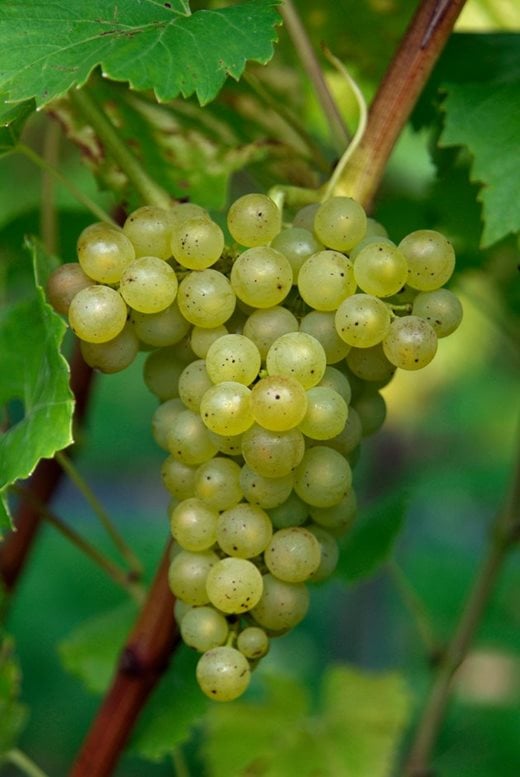 Botanical name: Vitis vinifera.
Botanical name: Vitis vinifera.- Origins: The common grapevine has been growing in Europe and Asia for thousands of years.
- First cultivated: The earliest evidence of cultivated grapes was found at Gadachrili Gora near the village of Imiri in south-eastern Georgia, which was thought to have been from about 6000 BC.
- Types: There are two basic types of grape: dessert and wine. There are white varieties available, such as 'Phonix' and 'Siegerrebe', and black varieties, such as 'Boskoop Glory' and 'Pinot Noir'.
- Skill level: Intermediate.
- Preferred location and conditions: Grapes require a sheltered site in full sun with free-draining soil. Grow under glass, or outside against a south or south-west facing wall.
- Planting and growing: Plant from October to March. See RHS advice on growing grapes.
- Harvest time: August to November.
Did you know?
Evidence suggests that we were eating wild grapes 22,000 years ago, although it took us another 15,000-16,000 years to domesticate them. Throughout the ages, we have revered grapes as both a food and a medicine, but perhaps they are best known as the key ingredient in wine.
The first archaeological evidence of grape wine was found in Georgia and thought to be 8,000 years old. Written accounts of wine can be found in the Epic of Gilgamesh, an ancient Sumerian text from the third millennium BC, and Egyptian hieroglyphics also make early references to wine. The ancient Greeks and Romans worshipped Dionysus or Bacchus, God of the grape harvest who they credited with inventing wine, and the drink played a central role in their culture and festivities. The Persians, on the other hand, believe wine was invented by a woman. According to one of their legends, a woman who had been suffering from a terrible headache, drank the fermented juice from a jar used for grape storage. She became calm and so relaxed, she fell asleep. When she awoke, her headache was gone.
Today, wine is widely drunk across many cultures, and
Vitis vinifera accounts for the majority of world wine production. In fact, there are currently somewhere between 5,000 and 10,000 varieties of
Vitis vinifera grapes.
An occasional glass of wine, particularly red wine, is thought to be good for the health as it contains antioxidants which can boost the immune system and reduce the risk of stroke and heart disease. Some studies suggest it can even reduce the risk of cancer. In their natural state, however, grapes have all these benefits, plus they’re rich in fibre, minerals and vitamins.
Although grapevines are more easily associated with the warmer climates of southern Europe, the Romans were growing them in Britain 2,000 years ago and recent mild summers have prompted a revival in British grape-growing. Grapevines can thrive in a greenhouse, and can also grow happily outside, so long as you choose a sunny, sheltered spot for them; against a south-facing wall is perfect. Quite aside from their luscious fruit, grapevines make a stunning ornamental feature in the garden, clambering over trellises and walls with their striking foliage.
Although wine-making might be a stretch too far for a single vine, with the right conditions, you should have a reasonable harvest of fruit for snacking, desserts, juicing or you could make your own raisins. The vine leaves can also be eaten. Try stuffing them with vegetables, herbs and rice to make the Greek speciality,
dolmades.

